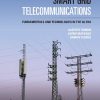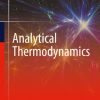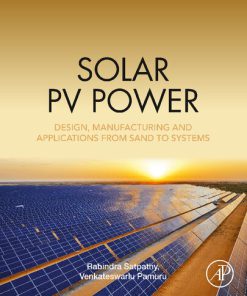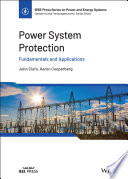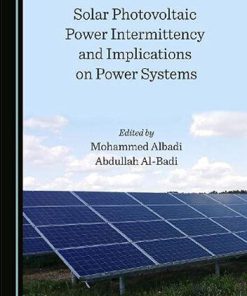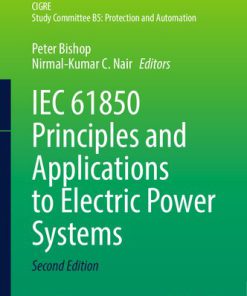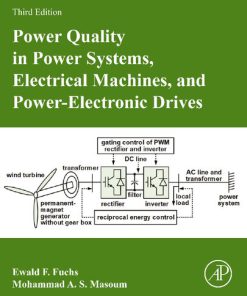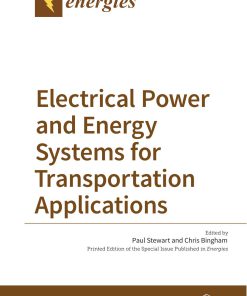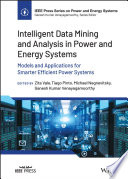Power Quality in Power Distribution Systems Concepts and Applications 1st Edition by Mahesh Kumar Mishra ISBN 0367750910 9780367750916
$50.00 Original price was: $50.00.$25.00Current price is: $25.00.
Power Quality in Power Distribution Systems Concepts and Applications 1st Edition by Mahesh Kumar Mishra – Ebook PDF Instant Download/Delivery: 0367750910 ,9780367750916
Full download Power Quality in Power Distribution Systems Concepts and Applications 1st Edition after payment
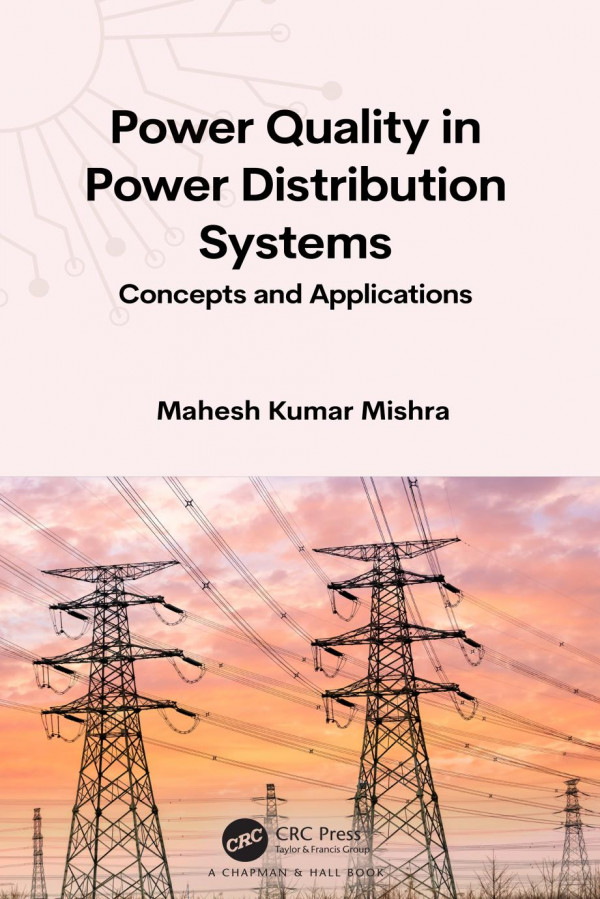
Product details:
ISBN 10: 0367750910
ISBN 13: 9780367750916
Author: Mahesh Kumar Mishra
Power Quality in Power Distribution Systems Concepts and Applications 1st Edition Table of contents:
Chapter 1 Introduction to Power Quality in Power Distribution System
1.1 Introduction
1.2 Power Quality
1.3 Power Quality Problems
1.3.1 Transients
1.3.2 Short-Duration Variations
1.3.3 Long-Duration Variations
1.3.4 Imbalance
1.3.5 Waveform Distortion
1.3.6 Voltage Fluctuations
1.3.7 Power Frequency Variations
1.4 Mitigation Techniques
1.4.1 Network Re-configuring Type
1.4.2 Compensating Type
1.5 Power Quality Monitoring
1.6 Power Quality Indices
1.7 Power Quality Standards
1.8 CBEMA and ITIC Curves
1.9 Summary
1.10 Problems
References
Chapter 2 Single-Phase Circuits: Power Definitions and Components
2.1 Introduction
2.2 Power Terms and Definitions in Single-Phase Systems
2.3 Phasor Representation of Electrical Quantities
2.4 Sinusoidal Voltage Source Supplying Non-linear Load Current
2.5 Non-sinusoidal Voltage Source Supplying Linear and Non-linear Loads
2.5.1 Active Power
2.5.2 Reactive Power
2.5.3 Apparent Power
2.5.4 Non Active Power
2.5.5 Distortion Power
2.5.6 Fundamental Power Factor
2.5.7 Power Factor
2.6 Summary
2.7 Problems
References
Chapter 3 Three Phase Circuits: Power Definitions and Various Components
3.1 Introduction
3.2 Three-phase Balanced System
3.2.1 Three-phase Instantaneous Power
3.2.2 Three Phase Instantaneous Reactive Power
3.2.3 Power Invariance in abc and αβ0 Coordinates
3.3 Instantaneous Active and Reactive Powers for Three-phase Circuits
3.3.1 Three-Phase Balance System
3.3.2 Three-Phase Unbalanced System
3.4 Symmetrical Components
3.4.1 Power Invariance in Symmetrical Components Transformation, Vector and Arithmetic Apparant Powers
3.4.2 Effective Apparent Power
3.4.3 Positive Sequence and Unbalance Powers
3.5 Three-phase Balanced Nonsinusoidal System
3.5.1 Neutral Current
3.5.2 Line to Line Voltage
3.5.3 Apparent Power with Budeanu Resolution: Balanced Distortion Case
3.5.4 Effective Apparent Power for Balanced Non-sinusoidal System
3.6 Three-phase Unbalanced and Non-sinusoidal System
3.6.1 Arithmetic and Vector Apparent Power with Budeanu’s Resolution
3.6.2 Effective Apparent Power
3.7 Summary
3.8 Problems
References
Chapter 4 Theory of Fundamental Load Compensation
4.1 Introduction
4.2 Theory of Fundamental Load Compensation
4.2.1 Power Factor Correction
4.2.2 Voltage Regulation
4.2.3 An Approximation Expression for the Voltage Regulation
4.3 Some Practical Aspects of Compensator used as Voltage Regulator
4.4 Phase Balancing and Power Factor Correction of Unbalanced Loads
4.4.1 Three-phase Unbalanced Loads
4.4.2 Representation of Three-phase Delta Connected Unbalanced Load
4.4.3 An Alternate Approach to Determine Phase Currents and Powers
4.4.4 An Example of Balancing an Unbalanced Delta Connected Load
4.5 A Generalized Approach for Load Compensation using Symmetrical Components
4.5.1 Sampling Method
4.5.2 Averaging Method
4.6 Compensator Admittance Represented as Positive and Negative Sequence Admittance Network
4.7 Compensation of Star Connected System with Grounded Neutral
4.8 Summary
4.9 Problems
References
Chapter 5 Control Theories for Load Compensation
5.1 Introduction
5.2 Instantaneous Reactive Power Theory
5.2.1 State Space Modeling of the Compensator
5.2.2 Switching Control of the VSI
5.2.3 Generation of Ploss to Maintain dc Capacitor Voltage
5.2.4 Computation of Load Average Power
5.3 Some Misconceptions in Instantaneous Reactive Power Theory
5.4 Theory of Instantaneous Symmetrical Components
5.4.1 Compensating Star Connected Load
5.4.2 Compensating Delta Connected Load
5.4.3 Compensation for Three-phase Three-wire System Supplying a Passive Load
5.4.4 Equivalence Between the Passive and Active Load Compensation for Three-phase Three-wire System
5.5 Summary
5.6 Problems
References
Chapter 6 Voltage Compensation Using Dynamic Voltage Restorer
6.1 Introduction
6.2 Methods to Regulate Voltage
6.3 Dynamic Voltage Restorer (DVR)
6.4 Operating Principle of DVR
6.4.1 General Case
6.5 Mathematical Description to Compute DVR Voltage
6.6 Transient Operation of the DVR
6.6.1 Operation of Three Phase DVR with Unbalance Voltages without Harmonics
6.6.2 Operation of Three Phase DVR with Unbalance Voltages with Harmonics
6.7 Realization of DVR voltage using Voltage Source Inverter
6.8 Maximum Compensation Capacity of the DVR without Real Power Support from the dc Link
6.9 Summary
6.10 Problems
References
Chapter 7 Unified Power Quality Conditioner
7.1 Introduction
7.2 UPQC Structure
7.3 Operation and Control of UPQC
7.4 Extraction of Reference Currents for Shunt VSI using Instantaneous Symmetrical Component Theory
7.4.1 Generation of Reference Currents for Shunt VSI
7.4.2 Control of Shunt Voltage Source Inverter
7.5 Control of Series Voltage Series Inverter
7.5.1 Type-1 Control for Reference Voltage Generation of Series VSI
7.5.2 Type-2 Control for Reference Voltage Generation of Series VSI
7.6 Summary
7.7 Problems
References
Appendix
Appendix A Fundamental and Positive Sequence Extraction
A.1 Fundamental Extraction
A.2 Extraction of Positive Sequence Fundamental Components
Appendix B Answers to Numerical Problems
Index
People also search for Power Quality in Power Distribution Systems Concepts and Applications 1st Edition:
power distribution r
xp power q series
v power pumps
utility power quality standards
understanding power distribution
Tags: Mahesh Kumar Mishra, Power Quality, Power Distribution, Applications
You may also like…
Engineering - Electrical & Electronic Engineering
Engineering - Energy & Power Resources
Flexibility in Electric Power Distribution Networks 1st Edition Hassan Haes Alhelou
Engineering - Energy & Power Resources
IEC 61850 Principles and Applications to Electric Power Systems 2nd Edition Peter Bishop
Uncategorized
Power Quality in Power Systems, Electrical Machines, and Power-Electronic Drives 3rd Edition Fuchs
Computers - Enterprise Computing Systems
Engineering - Energy & Power Resources
Electrical Power and Energy Systems for Transportation Applications Paul Stewart Chris Bingham
Technique - Energy: Renewable Energy

